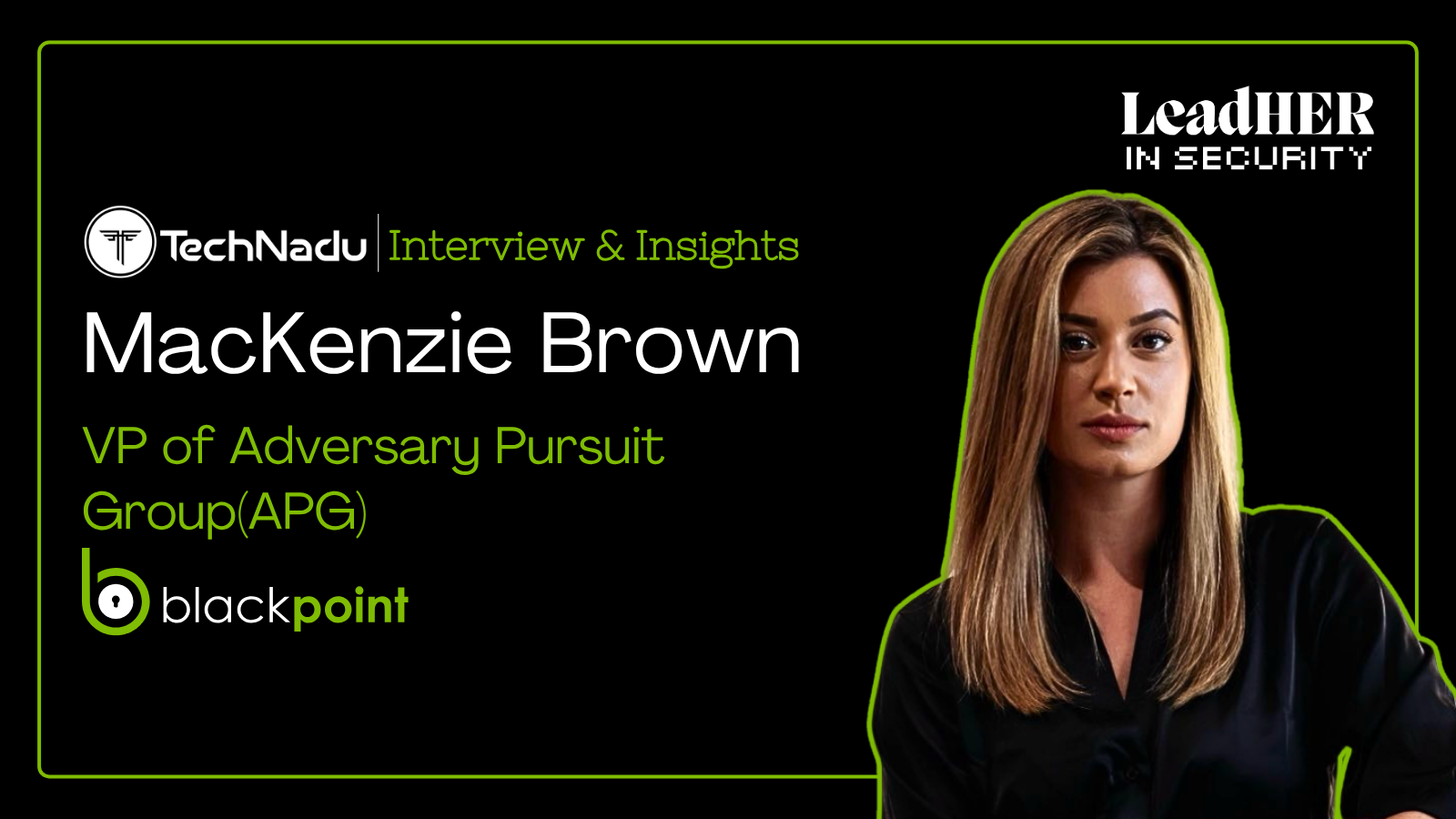
‘Valtix’ Founder and CTO Vishal Jain Foresees a Cloud Automation and PaaS Boom
'Valtix' is one of the key players expected to support the cloud infrastructure and services boom of the upcoming decade, filling the "cloud-native" gap very nicely as security in the space becomes a growing and undeniable necessity. The recent raising of $12.5 million in venture capital from entities such as 'Cisco Investments' and 'The Syndicate Group' comes as the stamp on Valtix importance in the field and helps the firm push strongly into the bright future that opens up.
We've reached out to co-founder and CTO of Valtix, Vishal Jain, and we got a glimpse of what makes the young platform so hopeful and important, what is in store for cloud technologies in general, and how security comes into play when you have to be versatile and support ultimate levels of scalability.
Can you give us the “short version” of what drew you into the field of security and what pushed you to co-found Valtix?
We talked to a bunch of enterprises before the company started. These enterprises had well thought through their datacenter and network security there. Now all of these enterprises were going to the cloud, had the same security mandate, but the cloud is all about agility. Historically, security slows business down, and the cloud presents an opportunity for security to catch up. These enterprises now had to think about network security in this new environment. We saw that mature vendors cannot make the leap with a stodgy rack of appliances. It was an unsolved big problem. So we started Valtix to deliver network security as a service in this new world.
Coming to my personal background, I have a technical and math background and I was always attracted to cryptography from early days of my undergraduate school. I started my career working on networking products and technology stacks and that eventually led me to security in general and network security in particular.
What does it mean to be a “cloud-native” service from the security perspective, and why is it a key (and unique) factor in the current market?
From our perspective, being “cloud-native” in network security means:
- Adapt to cloud apps and just like apps should be DevOps-friendly.
- Be app-focused, and network security should not require heavy design, maintenance, or effort to integrate with the cloud. So organizations can focus on apps and policy, not infrastructure maintenance.
- Lastly, the consumption model should be flexible - both technologically and business-wise.
All cloud capabilities must support the drivers that align with the enterprise’s cloud initiatives. These drivers include: agility, a focus on apps, and flexible consumption - else success of the initiative is at risk. So network security - not optional for most - must embody these attributes.
With the cloud sector in bloom right now, many look for versatility and scalability. How does Valtix accommodate these requirements without making sacrifices on security?
Valtix accommodates these requirements with its unique architecture. Valtix has a SaaS Control and Management Plane but a PaaS-delivered data plane residing in customer accounts. This gives enterprises versatility and scalability without making sacrifices on security.
With a SaaS-delivered control plane, Valtix provisions, patches, and manages enforcement points in enterprise accounts - with HA, resiliency, and scalability, natively integrating with cloud constructs. So organizations focus on apps and policy, not infrastructure maintenance. Since the dataplane resides in customer accounts, the enterprise’s production traffic stays in their accounts. No backhauling, no latency or compliance concerns. This means organizations get the best of both worlds, they own their security infrastructure, but they don’t have to maintain it.
What do you say to those who maintain that all cloud solutions are hackable, and it’s just a matter of time before it happens?
Let's be honest, everything is hackable. With cloud infrastructure, there are some shared security investments that some enterprises could not make on their own in their on-prem environments. Given all the investments to make it secure, the cloud is more secure than your own infrastructure if you do it right.
The key here is for enterprises to adopt cloud solutions that maintain security best practices:
- Use customer app-resident services when handling production data, do not let your production traffic leave your cloud environment to enforce security controls.
- You own the infrastructure, so private certificates and keys should stay in Key Management Systems that the enterprise owns and controls.
- Adopt a cloud-native solution, a solution that was designed with all of the assumptions of cloud in mind as opposed to a solution based on a box-based paradigm that assumes there could be physical isolation. Connectivity is ubiquitous in the cloud.
Your network solutions protect against unauthorized data exfiltration, lateral movement, malware distribution, and even inbound threats. How are these risky actions detected effectively, and up to what rates do you manage to stop them in real-world deployments?
In the Valtix solution, security follows apps. In other words, as apps scale and failover, global policies defined once in the control plane are enforced locally in the dataplane close to apps.
Detection rates depend on the controls that detected them, as well as the type of attacks. No one will give you a real world rate since threats evolve quickly. But, when Valtix enforces security controls, we see 100% of traffic. A solution that cannot see large blocks of traffic due to encryption cannot manage to detect and stop these threats. The Valtix dataplane is based on a single pass pipeline, it decrypts, inspects, and re-encrypts the traffic, having complete control over that things do not leak over the side when enforcing Network policy controls, IPS controls, WAF controls, Exfiltration controls with URL filtering and DLP, etc.
Do you have ransomware-specific defense solutions or plans to introduce any in the near future?
Ransomware always starts with initial penetration. Our job as a network security solution is to stop initial penetration, stop lateral movement and stop exfiltration. Once ransomware has taken over a host, it is a different solution space, and that goes beyond network security.
On the protection against zero-day exploits, how does identifying an unknown attack pattern and stopping it work?
We see zero-day exploits in two ways:
- Known vulnerabilities and unknown exploits. Here, we get threat feeds and IOCs, and we update rules for IPS and WAF constantly for vulnerabilities via our Cloud Controller.
- Unknown vulnerabilities and unknown exploits, nobody will have a signature and/or rules to prevent these. Tight network security policies, real-time visibility, and a positive security model definitely reduce attack aperture for these kinds of attacks.
The pandemic has accelerated the adoption of cloud solutions. Was Valtix ready for this speeding up, and where are things going from here for you? API improvements, machine learning, expansion of data lake use?
Valtix was definitely ready for cloud adoption speeding up. As I mentioned earlier, Valtix is a cloud-native solution born in the cloud. Valtix solution is elastic and multi-cloud, we got the pandemic-induced boom too, and we were able to scale effectively and immediately.
From the perspective of cloud technology, what advancements do you see as the most likely to impact the field in the most fundamental way in the next five years?
We expect that more than 50% spent in the cloud will be on solutions delivered and consumed as a service. Anything box based will not be allowed in enterprise cloud environments. This will happen within two years.
In the next five years, we will see enterprises adopt more automation in the cloud. This would include an over-reliance on automation, such as updates that are pushed from third-party software and services suppliers. Given recent security breaches like SolarWinds, we expect enterprises to ensure that automation is executing tasks that are valid and appropriate and put the security controls in place to do just that.
Valtix has secured $12.5 million in strategic funding from Cisco Investments, Northgate Capital, and The Syndicate Group. What does this mean for the company moving forward?
Valtix opened up a strategic round due to significant interest from Cisco Investments, The Syndicate Group, and NorthGate Capital, and it made perfect sense as we are expanding our GTM motion. This strategic funding enables us to accelerate our go-to-market motion, to fulfill our vision, and it validates our approach. It will bring value to our customers and partners at the same time.
If you were to give our readers a single piece of advice on cloud security, what would you say to them?
Don’t be the slow kid. Security should not be a boat anchor and cannot stand in the way of agility and application developers. Agility is what led to the cloud in the first place.
Enterprise cloud initiatives - based on digital transformation, compliance, or exiting the datacenter business - are mission-critical. They might be new apps, or lift-and-shift apps seeking efficiency. Drivers include: agility, a focus on apps, and flexible consumption.
All cloud capabilities must support those drivers - otherwise, the success of the initiative is at risk. This includes cloud security.













